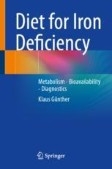Search
Search Results
-
Analysis of number, size and spatial distribution of rifle bullet-derived lead fragments in hunted roe deer using computed tomography
The use of lead-based rifle bullets in hunting poses a risk to human and animal health when bullet fragments remain in the game meat. The objective...

-
Multiplex real-time PCR for the detection and quantification of DNA from chamois, roe, deer, pork and beef
Meat originating from roe, deer and especially chamois is expensive. Normally, such delicacies are provided directly by hunters and exclusively...

-
Retrospective analysis of Sr-90 in roe deer antlers originating from north-west Germany
Antlers originating from Lower Saxony, Germany, and covering a broad range of the nuclear weapons testing period were collected from hunters. The roe...

-
Characterisation of Faecal Staphylococci from Roe Deer (Capreolus capreolus) and Red Deer (Cervus elaphus) and Their Susceptibility to Gallidermin
Our current knowledge of microbiota in wild ruminants is limited. The goal of this study was to evaluate staphylococcal species in red and roe deer...
-
Farmed-raised fallow deer (Dama dama L.) carcass characteristics and meat nutritional value
This study analysed carcass features and the chemical composition of semimembranosus (SM) and longissimus thoracis et lumborum (LTL) muscles from...

-
Carcass Characteristics and Meat Quality of Deer
Among meats alternative to those of traditionally farmed animals, deer has a long history in western culture as a result of being one of the main big...
-
Northeast Asian Dietary Environment in the Paleolithic Era
The dietary environment of the prehistoric inhabitants of the Korean Peninsula and South Manchurian regions informed the food culture of Korea’s...
-
Exemplifying the “wild boar paradox”: dynamics of cesium-137 contaminations in wild boars in Germany and Japan
Wild boars ( Sus scrofa ) are notorious for accumulating high contamination levels of 137 Cs in their meat. Publicly available data of 137 Cs...

-
Per- and polyfluoroalkyl substances (PFASs) in consumable species and food products
Per- and polyfluoroalkyl substances (PFASs) are a group of thousands of manmade chemicals widely used in consumer products and industrial processes....

-
Development and characterization of a novel nanobody with SRMV neutralizing activity
Peste des petits ruminants (PPR) is an acute, contact infectious disease caused by the small ruminant morbillivirus (SRMV), and its morbidity in...

-
Innovativeness in tradition: a study on the physical performance of leather scale armors during the Joseon Dynasty
During the Joseon Dynasty, light and convenient leather armors were developed to replace metal armors, which were heavy and difficult to manufacture....

-
Primitive Pottery Culture on the Korean Peninsula
The transition between the Paleolithic and early Neolithic eras marks a sea change in the history of human food culture, as nomadic migrations yield...
-
Taxidermal Preparations of an Extinct Sicilian Wolf Population (Canis lupus Linnaeus, 1758): Biological Studies and Restoration
In last decades, biotechnologies have enabled a deep development of knowledge in all fields of life sciences, allowing the collection of a wide range...
-
Application of DNA barcoding for ensuring food safety and quality
With increasing international food trade, food quality and safety are high priority worldwide. The consumption of contaminated and adulterated food...

-
Food authentication and adulteration control based on metrics data of foods and chemometrics
Great effort has been carried out the last years from the food sector for the understanding of food authentication, as the term has been well...

-
The History of Kimchi and Jeotgal (Fermented Fish)
Techniques for fermenting kimchi and jeotgal were developed on the Korean Peninsula during the Primitive Pottery era as early as 6000 BCE, making for...
-
Iron and Special Diets
After the presentation of different, special diets, strategies for an adequate iron supply for vegetarians and vegans are presented. The advantageous...
-
Tree-Leaf Chemicals and Feeding Behavior of Arboreal Mammals in Seasonal Environment
Mammalian herbivores are considered to eat plants with high nutrition but to avoid those with harmful chemical components. Most species eat plants...
-
Changes in the Food and Nutritional Status of Koreans over the Last Century
The dietary life of Koreans has undergone major changes in the last century due to the arrival of Western civilization on the Korean Peninsula. The...
-
Detection of animal DNA in vegan food by multiplex qPCR system
Vegan food claims to be free of all animal material. This must be verified by the food control authority and the production control laboratory. The...
